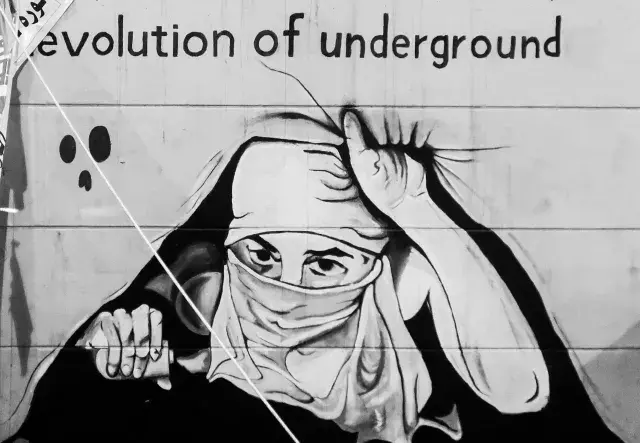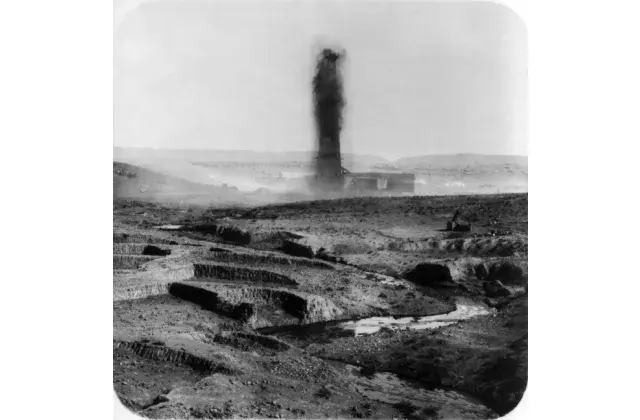Iraq's Contemporary Uprisings and Tishreen (2011 - 2020)

The 2019 Tishreen Uprising was a series of protest actions across Iraq consisting of demonstrations, sit-ins and mass marches. It emerged out of a heavy-handed response to a protest of university graduates and the dismissal of Abdel Wahab Al Saeid, commonly known as the ‘Liberator of Mosul.’ It was a sequel to mass protests from 2011 to 2018, which usually occurred in hot summer periods, when the government’s failure to provide basic services such as water and electricity was most noticeable. However, the 2019 Tishreen (Arabic for October) Uprising was qualitatively and quantitatively different to the contemporary mass protests that Iraq had faced, and perhaps unique “since the proclamation of the state in 1921.” The difference was not in the demands, but in the scale and duration, the composition and characteristics, the peaceful nature, and the voluntary and unifying aspects, all while facing various violent acts committed against them by governmental forces. The list of methods of violence used against protestors ranged from teargas and BB guns, to real munition, killings, assassinations, threats, kidnappings and illegal arrests.
The movement started with a week-long demonstration in Al Tahrir on 1 October 2019. From the very beginning, demonstrators were faced with different kinds of violence. The demonstrations ended after seven days in Al Sadr City. In addition to Baghdad, similar protests were held in the provinces Dhi Qar, Basra, Maysan, Wasit, Diwaniya, Najaf, Hilla and Muthanna. In response to the violence the initial protests were met with, civil activists announced another demonstration on 25 October 2019. On the day of 25th of October 2019, protestors decided to remain on Al Tahrir and to protest in the form of a sit-in. It was the beginning of large-scale mass protests which took place in ten cities in Iraq for the next six months, in some cases even longer. For the sit-in in Baghdad on Al Tahrir Square and its neighbourhood, protesters set up a tent city with a self-organised functioning infrastructure and governance. At least eight other tent cities were erected, such as on Al Bahriya Square in Basra, Al Habibi Square in Nasseriya and Thawra Al Thani Square in Najaf.
Protestors’ demands covered a wide spectrum of issues, including economic growth and employment, reliable public services, prudent and impartial governance, an end to corruption, credible elections as well as broader reform of the political system – including amendments to the constitution. The composition of the movement reflected Iraq’s complex society. The participants came from a variety of political, religious, societal, ethical and ideological backgrounds. Different groups shared the same mission, and groups who normally would not even ‘communicate’ with each other. What united the protesters was a shared vision expressed through the slogan: “We want a homeland!”. Even though the movement included young and old, the Iraqi youth was the driving force, with massive women’s participation.
A notable feature of the Uprising was the level of public support. People not only provided protestors with all their needs, all cultural and educational organisations and institutions, including universities went on strike on 27 October to support the protest. While often criticised as leaderless, the movement was far from unorganised or unstructured. The collective decision not to appoint a leader or even speakers had two reasons. Firstly, they did not want to be understood as a political entity or movement. The movement represented a united nation, demonstrating against a ruling system that had fallen short. Secondly, it was a concrete rejection and defensive resistance against any kind of false leadership, especially after decades of a one man or small elite rule who enriched themselves immensely while the nation was suffering. They were risking their lives and wellbeing to shape, coordinate and direct that serves the greater good, not themselves. The second feature of the movement was its peaceful nature, a clear decision not to use any kind of weapons or violence which in turn brought them public support.
Whether Tishreen is seen as a success or a failure is viewed through various lenses. Nevertheless, the fact is that the 2019 Tishreen Uprising was a popular mass protest, not a coup d’état where a political group wanted to overthrow a government. The inceptive unification was soon undermined by Iraq’s natural internal fragmentation topped with government suppression, violent acts of certain groups and foreign interests. Influences from which the common people have suffered since the founding of Iraq in 1921. But at least Tishreen achieved a change. Prime Minister Adil Abd al-Mahdi resigned on 30 November 2019. After a five-month long vacuum of accrediting his successor, Mustafa al-Kadhimi was assigned the new Prime Minister in May 2020 and a new election law was drafted.
This article was written by Hella Mewis and is licensed under CC BY-NC 4.0.






